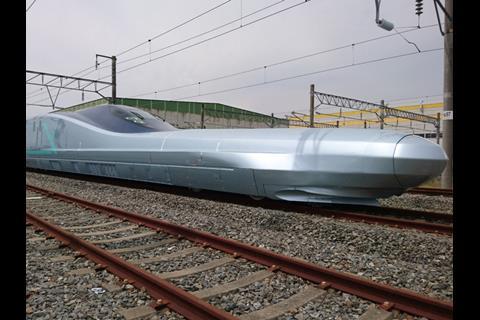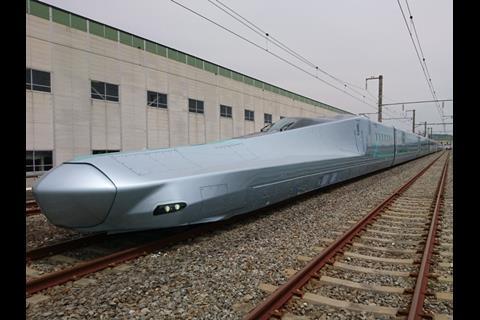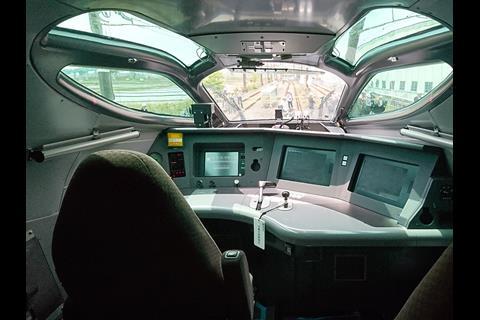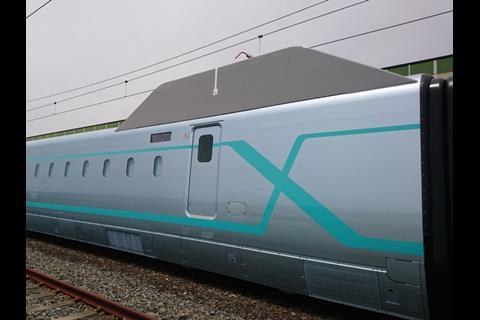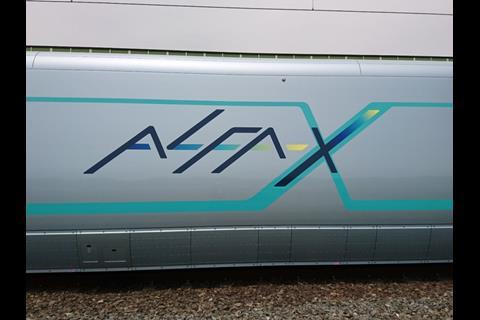JAPAN: East Japan Railway has formally unveiled its Series 956 ALFA-X high speed test train, which is due to start trial running at up to 400 km/h later this month. The completed 10-car trainset was displayed at its Sendai Shinkansen rolling stock workshops on May 9.
Launched in July 2017, the ALFA-X (Advanced Labs for Frontline Activity in rail eXperimentation) project is intended to pave the way for a new fleet of high speed trains as part of the railway’s Transform 2027 strategy.
The new trains would be needed by 2030 to coincide with extension of the Hokkaido Shinkansen to Sapporo. Increasing maximum speeds on the Tohoku Shinkansen from the current 320 km/h to 360 km/h would enable JR East to achieve a journey time of around 3 h over the 1 075 km between Tokyo and Sapporo.
Distinguished by its two driving vehicles with 16 m and 22 m noses to test aerodynamic forces at very high speeds, the new trainset incorporates a range of innovations, including an advanced active suspension system with pneumatic springs and a vertical vibration control devise. Silicon carbide semiconductors in both the traction and auxiliary power controls are expected to improve performance on steep gradients and reduce energy consumption. Improvements to the seating and air conditioning are also to be trialled.
Among measures to improve train performance in the event of an earthquake, ALFA-X is fitted with roof-mounted ‘aerodynamic drag plates’ for emergency braking at very high speeds, together with bogie-mounted electromagnetic brakes. Crushable elements and extra dampers between the bogies and carbodies are designed to minimise high lateral forces and reduce the risk of derailment.
Changes to the design of the carbody are intended to reduce the build-up of snow around the bogies, which will be particularly important for winter operation in northern Honshu and Hokkaido. A range of bogie-mounted sensors will provide ‘intelligent monitoring’ of all moving parts.
As part of its move towards condition-based maintenance, JR East is looking to trial train-mounted measuring systems for infrastructure monitoring.















